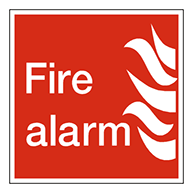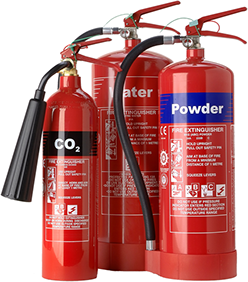Fire Safety
Fire Alarms
Design & Installation
A fire alarm and lighting system can vary in price and complexity from a single detector and sounder to an addressable fire alarm system in a multiple-occupancy building. Your Fire Risk Assessment will detail the category of system and level of emergency lighting required by your business and our team of dedicated Engineers will work with you to create a solution that best meets your needs. Our team of qualified Electricians will install and commission the system and return on a regular basis to ensure it is kept in full working order.
Current legislation requires your design to be prepared by a competent individual/organisation, in consultation with all interested parties and must include a set of drawings, a specification, a fire plan, a list of variations and a G1 design certificate as detailed within BS5389 – 1:2013.

Alarm Systems
Fire alarm systems are classified into two types - L (to protect life) and P (to protect property). At M Kemp Electrical we take pride in supplying a wide range of systems from different manufacturers, enabling us to provide a system tailored to your exact requirements. We offer the full range of products
Servicing
We pride ourselves on offering customers an excellent level of service, undertaken in a professional manner, always meeting and frequently exceeding the required British Standards. Our work takes us to a wide range of business sectors and to premises of all shapes and sizes. We are competent in servicing brand new systems as well as older systems and are often able to help our customers upgrade existing networks to comply with the latest legal requirements.
We employs teams of qualified Electrical engineers to service alarm and lighting systems as required under BS 5839 pt 1, 2013 (for commercial installations), BS 5839 pt 6, 2013 (for domestic installations and BS5266 pt1, 2011 (for emergency lighting).
Servicing of the Fire Alarm System includes:
- Testing the main fire alarm panel
- Testing the back-up batteries
- Checking the system wiring
- Verifying that automatic detectors are working correctly
- Verifying that manually operated devices are working correctly
- Checking audible and visual warning devices are functioning
- Plant shutdown
- Checking system documentation
Fire Extinguishers
We cater for small, single sites and multi-location businesses, ensuring every customer is protected against fire at all times.

Installation
All our Fire Extinguishers come with a fixing bracket as standard, ready for use. If your not sure what you are looking for feel free to give us a call. we stock fire extinguishers for every application so we can be sure to have what you are looking for.
Signage
The Health and Safety (Safety Signs and Signals) Regulations 1996 details that signs are required where a fire risk exists which cannot be avoided or controlled by other means.
Servicing
All extinguishers are serviced to British Standard 5306.3.2009 and selected to British Standard 5306.8.2012.
Fire risk assessments
In England and Wales, if you’re an employer, owner, landlord or occupier of a business or other non-domestic premises, you’re responsible for fire safety and are known as the ‘responsible person’. The Regulatory Reform (Fire Safety) Order 2005 details what you have to do to comply with the law.
Your insurance provider will assume you are in compliance with the fire safety order when they give you a quote.
Your first task is to carry out a Fire Risk Assessment which identifies all the possible fire hazards in the work environment and details what prevention measures are required. The person who provides such a document should be “suitably qualified”.
Having completed a Fire Risk Assessment and dealt with any outstanding prevention issues that it identified, you can be confident that you have provided your business and employees with the best fire protection. Of course, your duties don’t stop here as the emergency plan must be regularly reviewed, fire drills will need to be carried out, equipment such as extinguishers and alarms will need regular servicing and staff will need training.
The above information is based on information from the government’s own website www.gov.uk
